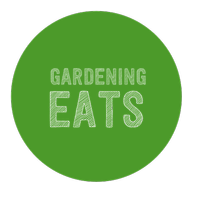Step into the verdant realm of herb cultivation with the fabulous Hyssopus officinalis, better known as hyssops. These versatile herbs can spice up your garden while offering diverse benefits. Journey through this comprehensive guide to grasp the fundamentals of growing hyssops at home, along with crucial insights to avoid common horticultural slip-ups.
Quick Reference Guide for Growing Hyssops
| Best Time to Plant | Spring (after the last frost) |
|---|---|
| Soil PH | 7.0 to 8.5 |
| Water Needs | Soil should be damp, but not soggy or bone dry |
| Sunlight Requirements | Full sun |
| Germination to Harvest Time | 14-21 days to germinate; 85-95 days from seed to harvest |
| Harvesting Indicator | During summer, when the plant is flowering |
| Usage | Primarily as a medicinal herb; also in culinary uses like herbal teas and seasoning for fatty meats |
| Pot/Container Growing | Yes (1 plant per 1-2 gallon container) |
| Bee Friendly | Yes |
Best Time to Plant Hyssops
The ideal planting period for hyssops hinges significantly on your local weather conditions. In general, the onset of spring after the last frost provides the perfect environment for the seedlings to thrive. For tailored guidance, consult the USDA Plant Hardiness Zone Map, or simply look up ‘plant hardiness zone + [city]’ if you reside outside the US.
How to Plant Hyssops the Right Way
Leapfrog common gardening hurdles with these essential tips. One critical but frequently overlooked factor is soil quality, which can significantly influence your hyssops’ growth. Your soil should be well-drained and tolerate poor conditions, with a Soil PH level between 7.0 and 8.5. Sow a handful of seeds 1-2″ deep and initially 2′ apart, thinning them to 12-18″ apart when they reach 2-3″ in height.
How Much Sunlight is Needed to Grow Hyssops
Proper sunlight exposure is integral to a fruitful harvest. Too much sun could wither your hyssops, whereas insufficient sunlight could stunt their growth or even cause them to perish. Ideally, your hyssops should bask in full sun for optimal development.
How Much to Water Hyssops
Watering has a crucial role to play in the wellbeing of your hyssops. The soil should ideally remain damp but not excessively wet or overly dry. Discoloration or wilting of the leaves indicates a need for watering adjustments. Keep a careful watch to prevent waterlogging or drought stress, either of which could fatally damage your plants.
How Long Does it Take Hyssops to Germinate and Grow?
Behold the marvel of nature as your hyssops begin to sprout. Expect a germination period of 14-21 days, and a total growth cycle of 85-95 days from sowing to harvesting.
When to Harvest Hyssops
Harvesting hyssops is ideally done during summer when the plants are in full bloom. Reaching heights of 1-2′, these herbs make a visually appealing addition to your garden while promising beneficial harvests.
What Can Hyssops Be Used For?
Food Use: Predominantly used as a medicinal herb, hyssops also find their way into the kitchen in the form of herbal teas or as seasonings for fatty meats. Flavor Profile: Their taste is uniquely minty with a slight bitterness, adding a distinctive flavor profile to your culinary creations.
Can Hyssops Grow in Pots and Containers?
Indeed, growing hyssops in 1-2 gallon containers or pots is a practical and beneficial approach. It aids in effective weed control, curbs overgrowth, and allows flexibility in relocating your plants for optimal sunlight or protection from severe weather conditions.
Are Hyssops Safe for Bees?
Absolutely, hyssops are bee-friendly. As GreenPeace.org confirms, bees pollinate about 90% of the world’s food crops. By cultivating hyssops, you are contributing to the survival and prosperity of these invaluable pollinators.

